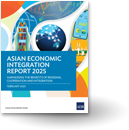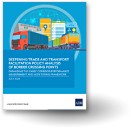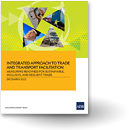Will trade tensions dim Christmas lights?
When I was a small child, one of the most unforgettable holiday moments was when my daddy brought in the Christmas tree. Living in an apartment, we couldn’t afford to buy a live tree, so we had an artificial one. It didn’t matter, as having a Christmas tree itself was more than exciting enough for a 7-year old kid.
The next step was to decorate the Christmas tree with various ornaments, including glass balls, small toys and so on. Then it was time to hang lines of bunch of small lights that would start flickering when plugged in.
Perhaps due to budget constraints, our family couldn’t afford to install as many lights as I wished. Instead, we always tried to disperse the lights so the entire tree lit up well, without any dark shadows on any side.
I clearly remember the feeling of joy I had when the Christmas lights were finally on. How can a child forget the excitement watching the flickering beautiful lights in absolute silence, sitting together with his or her family?
Christmas tree lights among PRC products subject to US tariffs
Fast forward to September 2018, when the US government announced 5,745 tariff lines to be subject to 10% tariffs – approximately $200 billion worth of Chinese imports. This was part of the US’s continuing response to what it said was the theft by the People's Republic of China (PRC) of American intellectual property and forced transfer of American technology alleged by the Office of the US Trade Representative.
In the list of 8-digit subheadings of the Harmonized System (HS) of tariff lines was HS code 9405.30.00, the lighting sets used for Christmas trees. Since September 24, 2018, the tariff has been 10%.
And it’s worth noting that in 2016, the US imported from the PRC $1.5 billion worth of Christmas ornaments, accounting for 92% of all the Christmas ornaments it imported that year. The PRC now supplies more than 80% of Christmas decorations on the planet every year, about half of which go to the US, according to UN statistics.
A 10% tariff on Christmas tree lights may not make a big difference to US consumers’ decision on whether to still buy those lights or not, as part of the new tariff will be absorbed by the suppliers or retailers. Even if the majority of the additional costs are passed on to consumers, the added burdens may not be too significant.
Raising trade barriers leads to mutual loss
However, the 25% tariffs could presage a different story. Low-income households may well decide to use fewer lights to decorate their Christmas tree. In this sense, the 90-day ceasefire recently agreed by the US and the PRC at the G20 Summit in Buenos Aires to hold off increasing the tariff to 25% is certainly an encouraging sign – although quite uncertainties lie ahead.
Given that the 5,745 tariff lines include not only intermediate goods but also consumer goods, additional tariffs, let alone the tariffs on the remaining $267 billion Chinese imports by the US will certainly affect consumers’ wallets. Higher costs of consumer goods will stoke inflationary pressures, and damage consumers’ purchasing power. Either they will reduce the quantities for the same items they purchased, or stop buying some of the items altogether.
If this type of tariffs is intended to be punitive to trading partners, the irony is that the initiators themselves are also not immune to costs, paving the way for the negative sum game.
The caveat of free and liberal international trade lies in taking advantage of comparative advantage by choosing to specialize in whatever I can produce relatively better—more efficiently or at a cheaper cost compared to other products—while expecting the other side to do the same, and then engaging in exchange of respective surpluses (trade) to mutual benefit. So, raising trade barriers is tantamount to the opposite of the nurturing gains from trade, leading to mutual loss.
World watching how PRC-US trade talks unfold over truce period
The disruptive effect of US-PRC trade tensions on international trade has so far been marginal, as the cross-border sourcing and purchase contracts are relatively long-term, having been entered into some time before the tit-for-tat frictions started. Their real effect will thus only materialize over time and as the tariffs rise, damaging supply chains that intertwine many other countries than the US and PRC and causing sizable harm to business activities as well as consumers’ welfare for many countries.
Christmas tree lights are yet another innocent victim of the trade conflict between the US and PRC. After all, it may not be suitable to make them in the US anymore due to higher wage and other production costs involved, so why not import them at cheaper prices from the PRC while focusing on specializing in high-end products?
The stakes couldn’t be higher at this juncture in containing the escalation of trade conflicts. This is why the entire world will be carefully watching how the negotiations between the US and Chinese governments will unfold over the next three months, and beyond.
This holiday season Christmas tree lights will continue to flicker despite the US-PRC trade tensions. But if the conflict rages, they may be dimmer a year from now.
Original article was published at the ADB Blog and duplicated here with permission from the author. *




